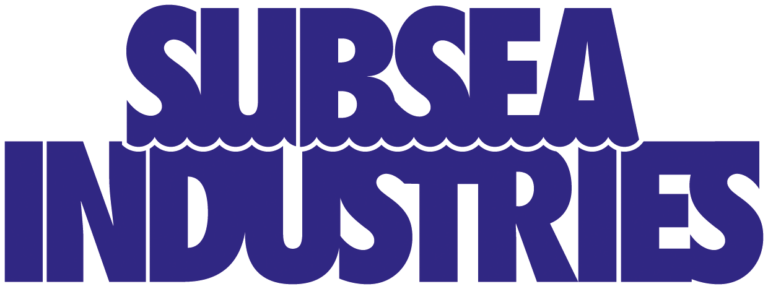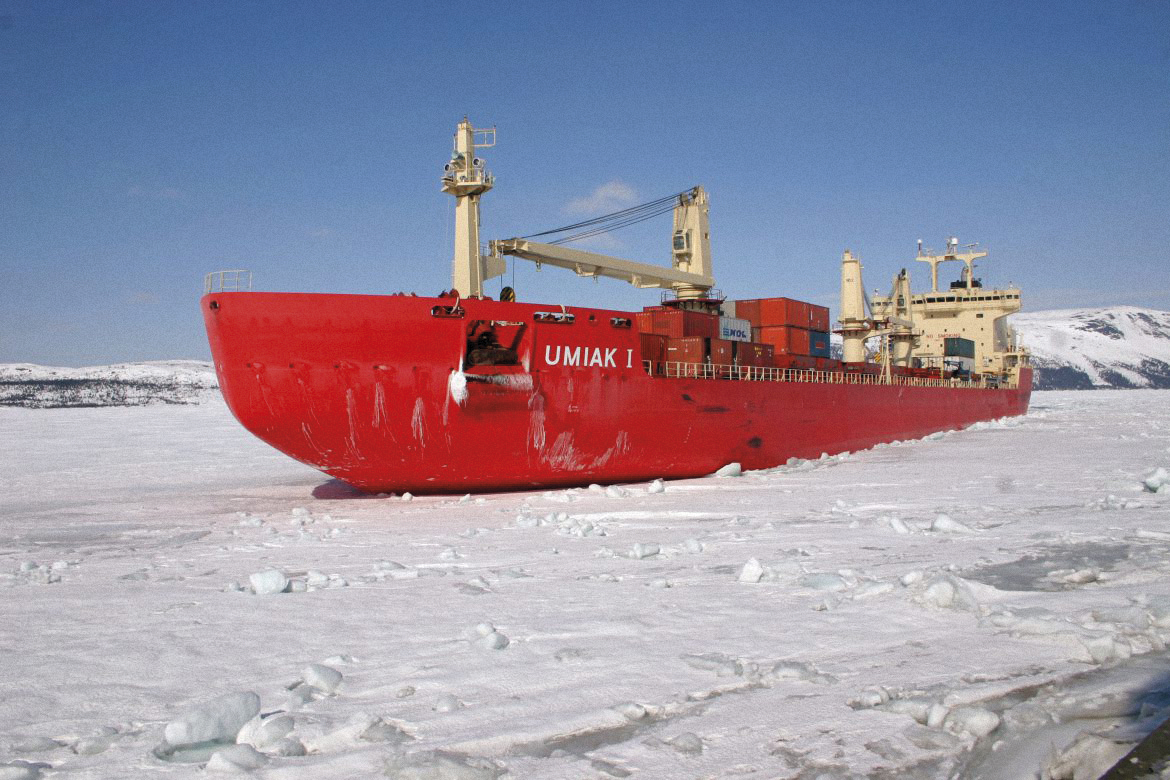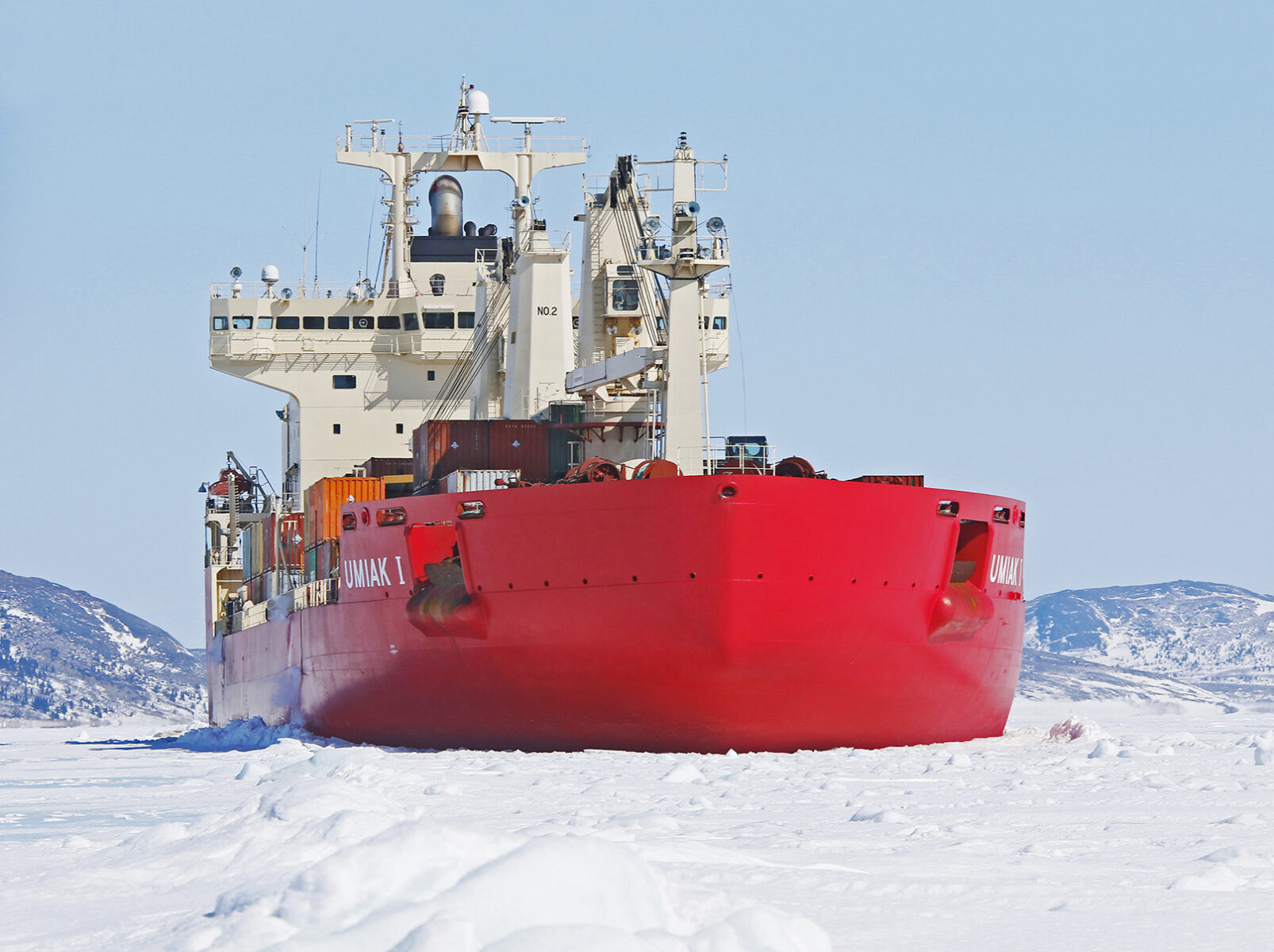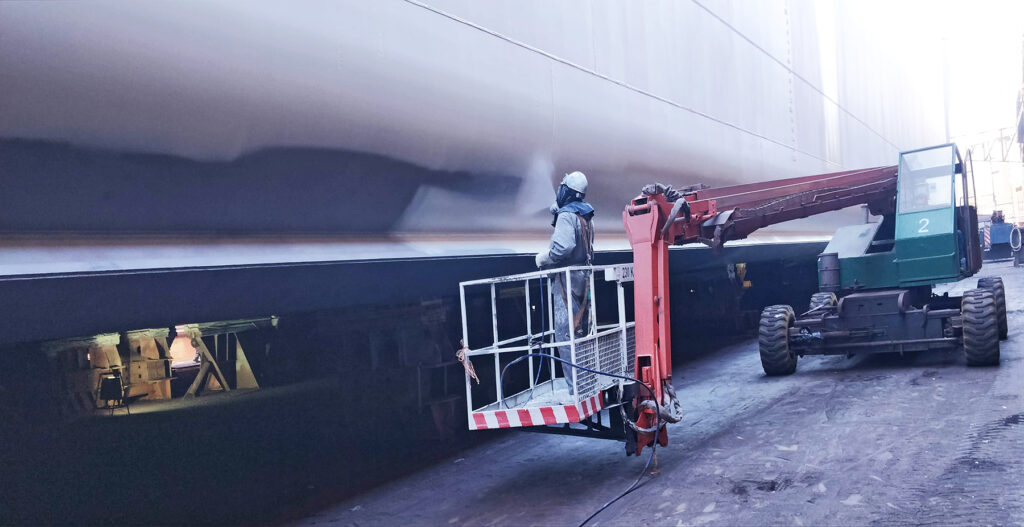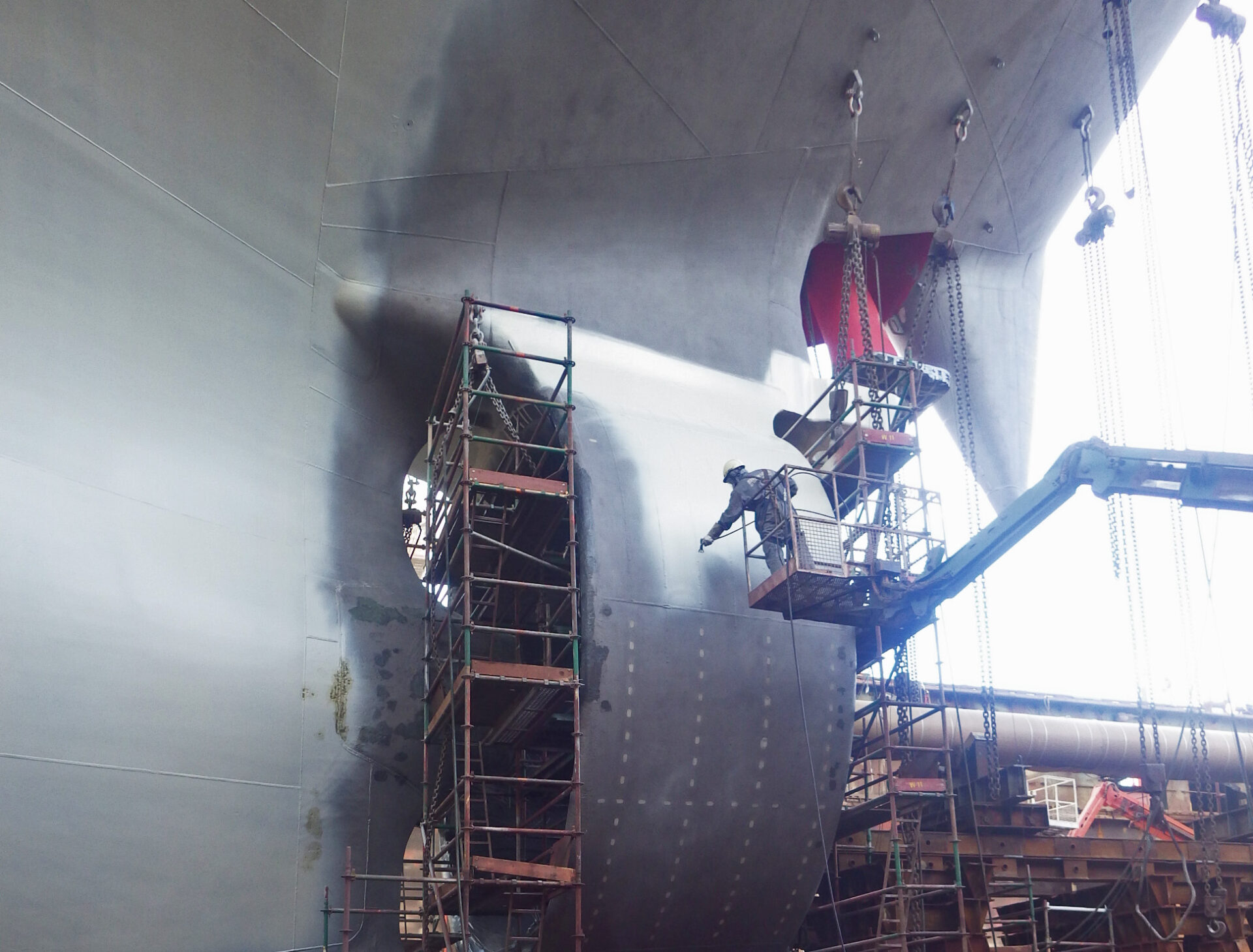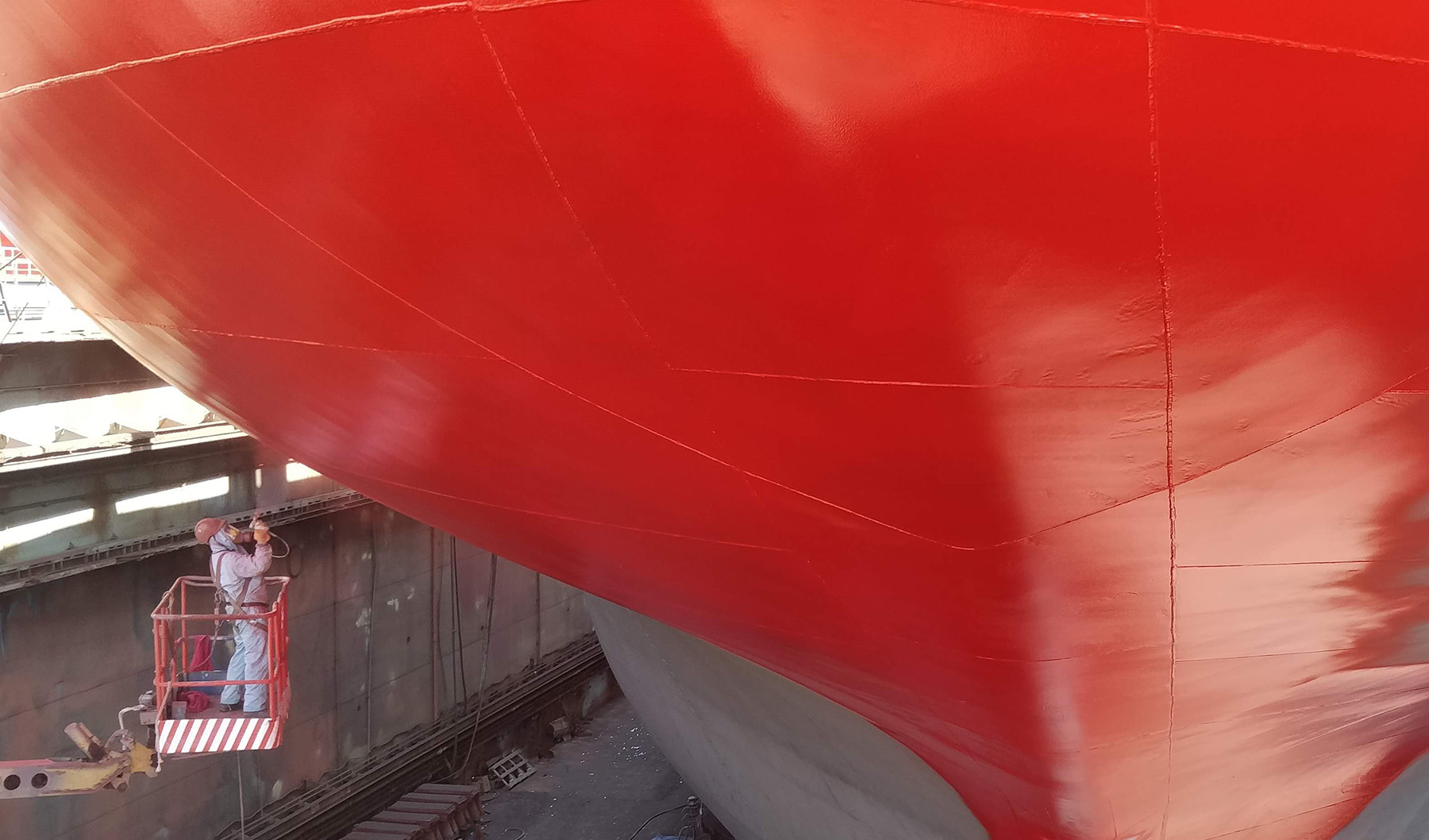On its regular run down the Labrador coast, Umiak I contends with some of the world’s most rugged ice conditions, including icebergs.
In April 2021 the icebreaking bulk carrier Umiak I was coated with Ecospeed. Application was carried out at the leading European ship repair and conversion yard Remontowa Shiprepair Yard in Gdansk, Poland. The ship is owned by Fednav and managed by Canship Ugland Ltd.
Taking to the water for the first time over 75 years ago, Fednav has been innovating ever since. Known primarily for successful navigation of the Canadian Arctic, the company forged complex routes through unknown waters, always staying true to their purpose of doing things the right way for their clients. They have grown to become Canada’s largest oceangoing bulk shipping company, mastering a multitude of complex routes on both the Great Lakes and the Arctic with an arsenal of close to 65 owned vessels.
Canship Ugland Ltd. is a Canadian ship management company located in St. John’s, Newfoundland. The company started its operations in 1997 when the first oil produced on the Grand Banks was transported ashore. Besides Umiak I the company also manages a diverse fleet of vessels; two shuttle tankers in Europe, two local fire-fighting escort tugs, three pilot boats, an oil/chemical tanker on the East Coast of Canada and a passenger cargo vessel.
The hull is reinforced to navigate unassisted through ice that is 1.5 meters thick.
Stronger than the rest
On its regular run down the Labrador coast, Umiak I contends with some of the world’s most rugged ice conditions, including icebergs, from November to July each year.While the open-water speed in a laden condition is some 13.5 knots, the bulk carrier is capable of making over three knots in level first year ice of 1.5-meter thickness. Capability for effective ice ramming goes hand-in-hand with the ICE-15 classification. The ramming procedure entails sailing at a specified speed through the ice until the vessel is brought to a stop by the resistance of the ice. The vessel is then put astern to come free of the packed ice, and is then sailed full ahead, to break through the ice until brought up again by the force of resistance. The procedure is used for thick ice and ice ridges.
The vessel is then put astern to come free of the packed ice, and is then sailed full ahead, to break through the ice.
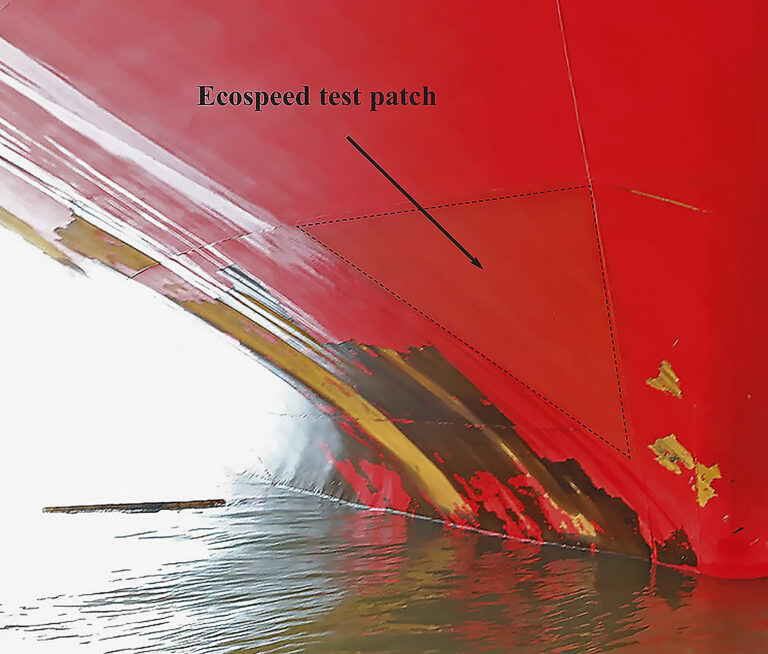



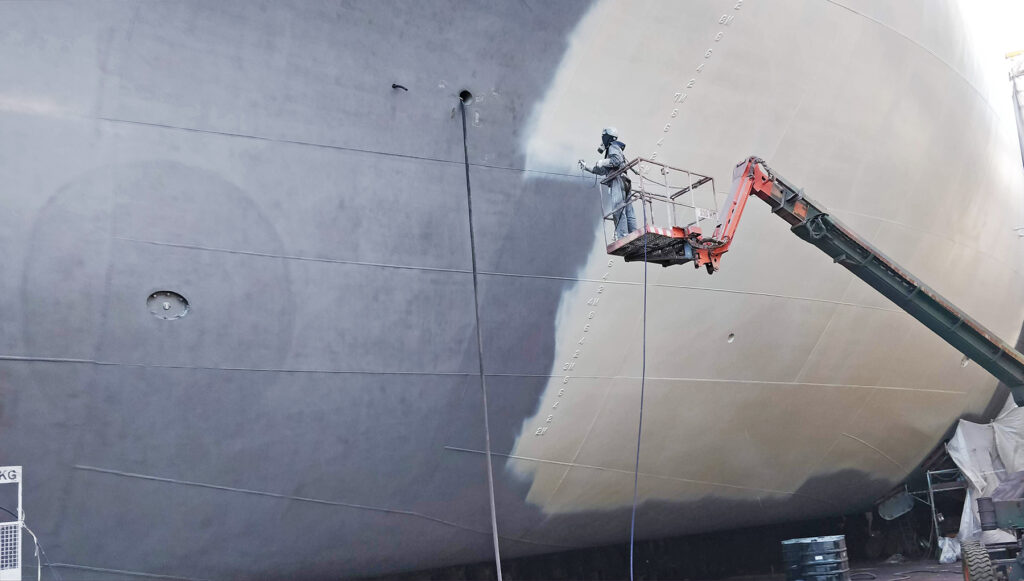
Only the best protection good enough
It is not difficult to see that a special hull coating is required to withstand this kind of impact and tremendous power.
During the 2016 dry docking, it was decided to apply two test patches of Ecospeed coating to areas most prone to damage. Over the next five winter seasons the condition of the Ecospeed test patches was examined and found to hold up to the very difficult conditions despite the continous impact with ice. The decision was made to replace the entire underwater hull coating with Ecospeed at the next docking.
The application was completed during Umiak’s scheduled main survey and BWTS installation at Remontowa Shiprepair Yard. Another advantage of Ecospeed to both shipowner and shipyard is ease and flexibility of application. The entire system is applied in only two homogeneous coats and the overcoating time can be as short as three or four hours, all the way up to weeks or even months if needed. Therefore, an Ecospeed application can easily be adapted to a shipyard’s schedule or to unpredictable weather conditions.
The ship’s rudder and nozzle were also protected with our coating system. First corrosion damage on the nozzle was repaired with Ecofix.
This restored the surface back to its original shape with a smooth surface prior to recoating with Ecoshield.
(the article continues after the pictures)
The decision was made to replace the entire underwater hull coating with Ecospeed at the next docking.
Conclusion
Experience has shown that our coating stays on the hull longer and resists the ice far better than the most generally used specialized ice coatings. Ecospeed remains bonded to the ship’s plates even as they flex and bend under ice pressure and impact.
Ecospeed has been recognized by Lloyd’s Register as an abrasion resistant ice coating for ships. Its correct use on the ice belt specifically permits a reduction of the ice belt’s steel plating by 1 mm or more.
Due to its unique composition, Ecospeed is not only the best protection available for underwater hulls of icebreakers and ice-going vessels, the coating also provides the best hull performance and is the easiest ice-going paint to apply and maintain.
